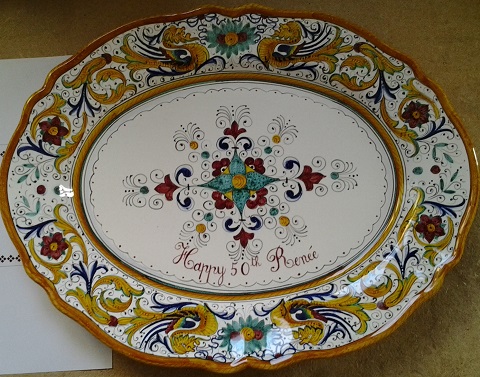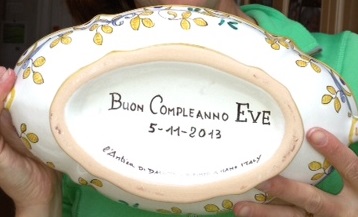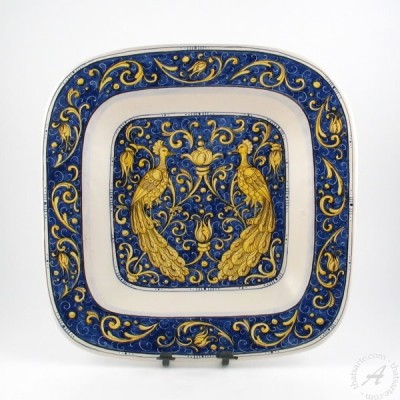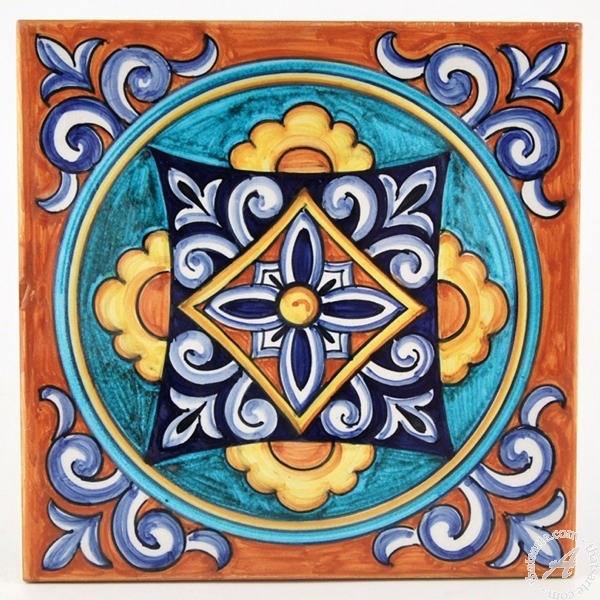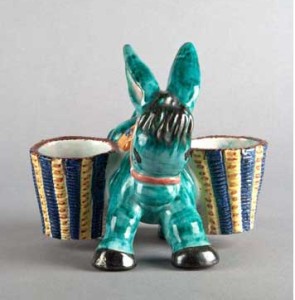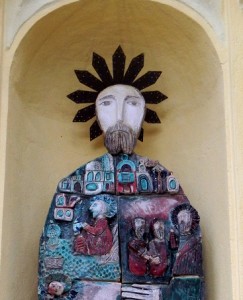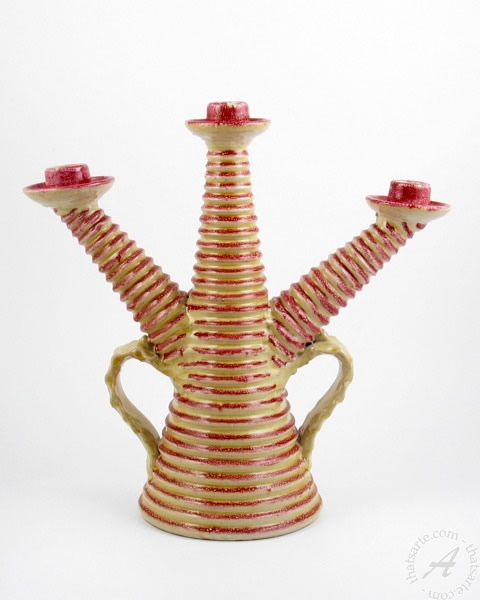Food for your thoughts, joy for your eyes… Our best selling Italian pottery and other goods. Strictly handmade. Our collection of hand painted Italian tiles is getting larger and larger, with many traditional designs from different Italian regions. Last year our Customers favorite tile was Tile 18 by Francesca Niccacci. 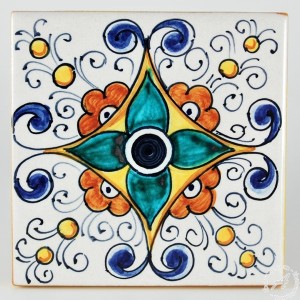 Italian tile panels are an old time favorite, for their versatile uses and distinctive impact of home décor. Our best seller in 2014 was Lemons by Ghenos, a lovely Sicilian panel.
Italian tile panels are an old time favorite, for their versatile uses and distinctive impact of home décor. Our best seller in 2014 was Lemons by Ghenos, a lovely Sicilian panel. 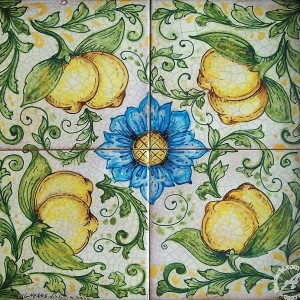
Highlights
Why ask for Italian pottery personalization
The personalization is only one of the charming details that differentiate handmade pottery from machine made ceramics, yet it is perhaps the most valuable detail as it has the power to turn a nice object into a cherished piece of somebody’s life.
Most of the beautiful Italian pottery pieces that leave us breathless when we visit Museums or antique art galleries were made on commission and somehow personalized. The commissioner briefed the artist as to the message he wished the item to deliver and the artist decorated the pottery accordingly.
Especially popular as wedding gifts, large wall plates, urns, bowls and jars were carriers of moral lessons on beauty, virtue or timeless love, which took the form of images or mottos nicely painted in elaborate scrolls. Continue reading
Peacocks on Italian ceramics
A source of positive symbolic meanings, peacocks are prominent in Italian pottery.
Pliny the Elder, the Roman philosopher, described very well how the peacock replaces his entire tail of feathers annually. This fascinating event, together with the belief that the bird’s flesh never goes bad but dries naturally, entitled our ancestors to depict him as a symbol of resurrection, renewal and immortality.
Often the representation of the peacocks on Italian ceramic objects focuses on the “eyes” that decorate the birds magnificent tail. Occhio di pavone, the “peacock eye”, has been a popular motif on our pottery: for example on the rim of Renaissance wall plates, on large serving bowls, on our dinnerware.
Just added! Eugenio’s geometric tiles
I do hope we are not getting boring, despite our third post in a row about Italian tiles. The truth is that we never seem to get enough of them and the enthusiasm of our Customers about their unique interior design projects is so contagious!
So we have convinced Eugenio Ricciarelli, a dear friend and the very first pottery maker we added to our Italian pottery website, to paint for us a small collection of tiles, richly decorated, colorful and vibrant with energy.
We have imagined them on a tabletop, inlaid into wood or wrought iron, on the floor as an inlaid tile rug, on a backsplash mixed with solid tiles, as a wall panel over a bath tub … endless decorating solutions for one of most genuine products of Italian arts and crafts.
Italian tiles to love
Francesca Niccacci is an Italian ceramic painter from Deruta, winner of International prizes.
She is a great interpreter of historical and mythological scenes, featured in Museums and Churches around the world. Yet she loves the geometric designs that are so much “Deruta”. Francesca plays with them, taking them to a personal next step and applying them to wall plates and tiles.
We particularly like her tiles, so intricate and rich. She paints them in different designs and patterns, that are often a great inspiration for interior designers to create unique backsplashes or tiled surfaces.
Collecting Italian majolica floor tiles
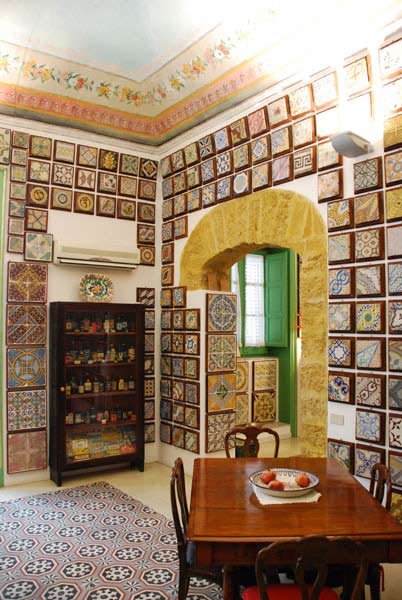 This story is about love and dedication, about beauty and craftsmanship, about history and heritage.
This story is about love and dedication, about beauty and craftsmanship, about history and heritage.
Pio Mellina is a man who turned his passion for antique Italian tiles into a dream and a few years ago the dream came true. He has created “Le Stanze al Genio”, a Museum in Palermo where visitors can explore his huge collection and marvel at the variety of designs, styles and colors. A display of Italic creative genius! Pio has been collecting antique Italian tiles since he was a child. Instead of joining his friend for a soccer match, he searched the little street markets in the old city. Tiles were cheap, as people did not know what to do with them. Sometimes they were just the waste of the renovation of old houses. Pio purchased them and stored them in his parent’s basement.
When the basement was packed with tiles and Pio could no longer locate what he was looking for, he started to organize them and to collect information as well. His studies changed his collecting habits: he learnt to appraise the tiles he found and purchased some very rare pieces. Pio’s wish to have a place of his own where the tiles could be displayed and appreciated by anyone grew over time, just like his collection. In 1998 he bought a flat in an ancient downtown building. He started the renovation with a twofold purpose: it had to be his home as well as the place where all his tiles could be beautifully displayed. In 2008 Pio Mellina’s house and museum was ready and opened to the public. Continue reading
100+ Deruta ceramic statuettes
We are not huge fans of statuettes, but the exhibition that is now on in Deruta ceramic museum is really very special. It’s about a collection of 100+ small ceramic sculptures made in Deruta between 1930 and 1950 for Perugina, THE Italian chocolate factory.  They were sold in special packs with chocolates, Easter eggs (our Easter eggs are pretty big) and the timeless Baci – don’t tell us you know nothing about Baci …
They were sold in special packs with chocolates, Easter eggs (our Easter eggs are pretty big) and the timeless Baci – don’t tell us you know nothing about Baci …
This donkey statuette was our favorite!
By Tiziana Manzetti
My visit to the Five Lands with an eye on ceramics
The tradition of pottery making is very strong in Liguria, dating back to the Middle Ages and evolved into Modern Art in the last century.
Albissola is probably the most popular city in this respect, but definitely not the only one. Everywhere you go, you can find the sign of people’s love for this art. Here you can see the statues decorating the front of the Oratorio di Sant’Andrea in Monterosso, a tiny church on the beach that would go unnoticed if it were not for these unique and precious ceramic works.
The key events in the life of the Saint Andrew and Saint Dominic are narrated by ceramic tiles that are combined to form a statue of the Saints. A lovely spot in an otherwise very “touristy” place.
By Tiziana Manzetti
Hand painting Italian majolica: a video
In this video, Enzo Scardino from Ghenos, paints a lovely Madonna with child. You can see the various steps that lead to an authentic masterpiece! Enjoy the performance.
Candle holders all around!
Candle holders and candlesticks are the perfect accessory to create the right atmosphere in your home. They add style to your decoration, offer the perfect light for your family parties, create coziness in an instant and their flickering light is just magic in your Summer evenings outdoor.
We love handmade ceramic candle holders, with their strong personality and authentic artistry!
By Tiziana Manzetti

